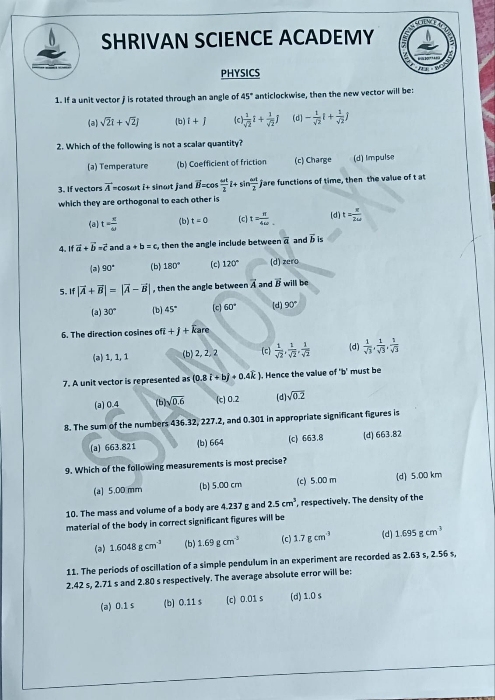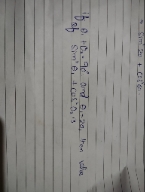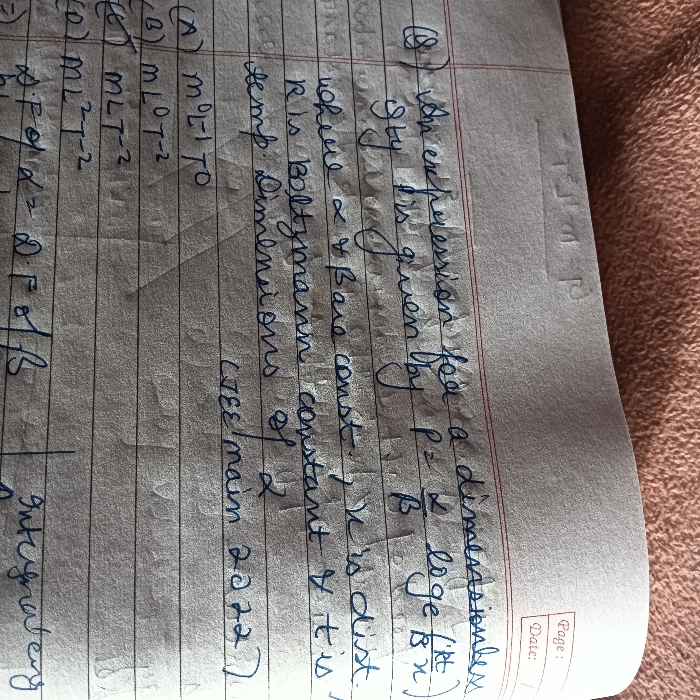CBSE Class 11-science Answered
Escape speed derivation
Asked by athirass31 | 03 Nov, 2019, 11:13: AM
The principle of conservation of energy helps us to get escape speed. Suppose the object did reach infinity
and that its speed there was vf. The energy of an object is the sum of potential and kinetic energy.
Let W1 denotes the gravitational potential energy of the object at infinity.
The total energy E∞ of the projectile at infinity then is
 ......................(1)
......................(1)where W∞ is the potential energy at infinity.
If the object was thrown initially with a speed vi from a point at a distance (h+RE) from the center of the earth
(RE = radius of the earth), its energy initially was
 .........................(2)
.........................(2)By the principle of energy conservation Eqs. (1) and (2) must be equal. Hence
 ......................(3)
......................(3)R.H.S. of eqn.(3) is a positive quantity with a minimum value zero hence so must be the L.H.S.
Thus, an object can reach infinity as long as vi is such that
Thus, an object can reach infinity as long as vi is such that
 ....................(4)
....................(4)The minimum value of vi corresponds to the case when the L.H.S. of Eq. (4) equals zero.
Thus, the minimum speed required for an object to reach infinity (i.e. escape from the earth) corresponds to

If the object is thrown from the surface of the earth, h=0, and we get

Using the relation g = GME/ RE2 , we get  .
.
 .
. Using the value of g and RE, numerically vi-min≈ 11.2 km/s. This is called the escape speed,
sometimes loosely called the escape +velocity.
Answered by Thiyagarajan K | 03 Nov, 2019, 12:13: PM
CBSE 11-science - Physics
Asked by rajeshabirami27 | 07 May, 2024, 04:31: PM
CBSE 11-science - Physics
Asked by yatin1043 | 06 May, 2024, 02:47: PM
CBSE 11-science - Physics
Asked by sheikhsaadat24 | 17 Apr, 2024, 09:41: PM
CBSE 11-science - Physics
Asked by sy123946 | 07 Apr, 2024, 04:23: PM
CBSE 11-science - Physics
Asked by derhebha955 | 03 Apr, 2024, 09:03: AM
CBSE 11-science - Physics
Asked by sumedhasingh238 | 29 Mar, 2024, 05:15: PM
CBSE 11-science - Physics
Asked by sumedhasingh238 | 28 Mar, 2024, 11:10: PM
CBSE 11-science - Physics
Asked by roshnibudhrani88 | 23 Mar, 2024, 05:52: PM
CBSE 11-science - Physics
Asked by emad.amd | 21 Mar, 2024, 12:00: PM





